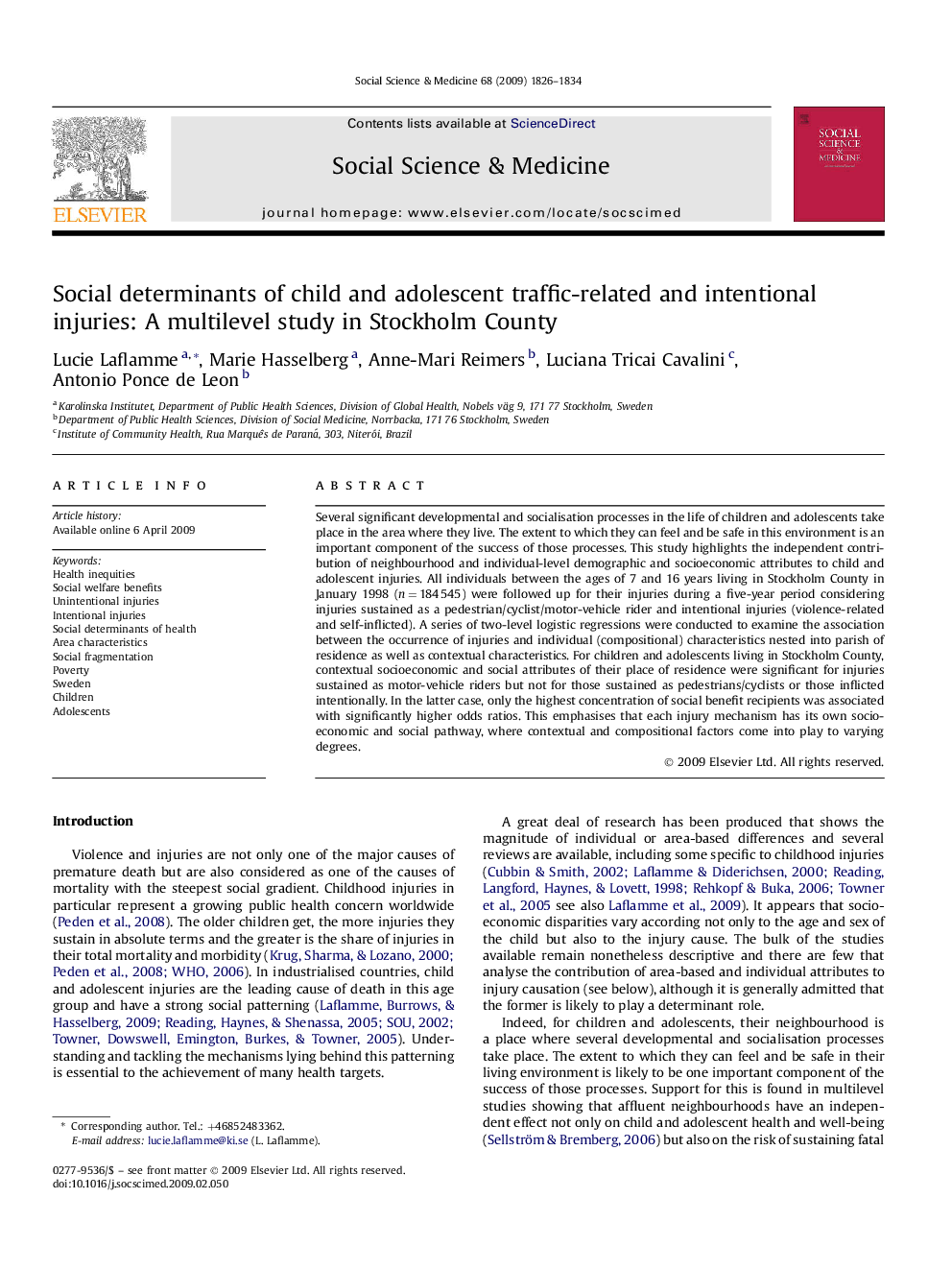| Article ID | Journal | Published Year | Pages | File Type |
|---|---|---|---|---|
| 953612 | Social Science & Medicine | 2009 | 9 Pages |
Several significant developmental and socialisation processes in the life of children and adolescents take place in the area where they live. The extent to which they can feel and be safe in this environment is an important component of the success of those processes. This study highlights the independent contribution of neighbourhood and individual-level demographic and socioeconomic attributes to child and adolescent injuries. All individuals between the ages of 7 and 16 years living in Stockholm County in January 1998 (n = 184 545) were followed up for their injuries during a five-year period considering injuries sustained as a pedestrian/cyclist/motor-vehicle rider and intentional injuries (violence-related and self-inflicted). A series of two-level logistic regressions were conducted to examine the association between the occurrence of injuries and individual (compositional) characteristics nested into parish of residence as well as contextual characteristics. For children and adolescents living in Stockholm County, contextual socioeconomic and social attributes of their place of residence were significant for injuries sustained as motor-vehicle riders but not for those sustained as pedestrians/cyclists or those inflicted intentionally. In the latter case, only the highest concentration of social benefit recipients was associated with significantly higher odds ratios. This emphasises that each injury mechanism has its own socioeconomic and social pathway, where contextual and compositional factors come into play to varying degrees.
